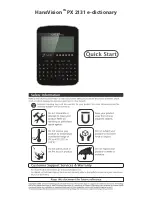
FXAlg #720: MonoChor ¥ FXAlg #721: MonoFlan
Algorithm Reference-91
Note that a Pt PkSplit of 100% gives only odd multiples of a fundamental that is one octave down from no splitting.
The presence of only odd multiples will produce a hollow sort of sound, like a square wave (which also only has
odd harmonics). Curiously enough, at a Pt PkSplit of 50% we also get odd multiples of a frequency that is now two
octaves below the original Pitch parameter. In general, most values of PkSplit will give peak positions that are not
harmonically related.
The figures below show Pt PkShape of -1.0, 0.0, and 1.0, for a Pitch of C6 and a PkSplit of 0%.
Response of Pitcher with PkShape settings at 0, -1.0, and 1.0.
Applying Pitcher to sounds such as a single sawtooth wave will tend to not produce much output, unless the
sawtooth frequency and the Pitcher frequency match or are harmonically related, because otherwise the peaks in
the input spectrum won't line up with the peaks in the Pitcher filter. If there are enough peaks in the input spectrum
(obtained by using sounds with noise components, or combining lots of different simple sounds, especially low
pitched ones, or severely distorting a simple sound) then Pitcher can do a good job of imposing its pitch on the
sound.
Multiple Pitcher algorithms can be run (yes, it takes all of KDFX to get three) to produce chordal output.
At extremely low Pitch settings, the effect begins to sound more like a multi-tap delay, but this can be pretty cool,
too.
A vocoder-like effect can be produced, although in some sense it works in exactly an opposite way to a real vocoder.
A real vocoder will superimpose the spectrum of one signal (typically speech) onto a musical signal (which has only
a small number of harmonically related spectral peaks). Pitcher takes an input such as speech, and then picks out
only the components that match a harmonic series, as though they were from a musical note.
PeakShape = -1.0
PeakSplit = 0%
Khz
dB
PeakShape = 1.0
PeakSplit = 0%
Khz
dB
PeakShape = 0
PeakSplit = 0%
Khz
dB



































